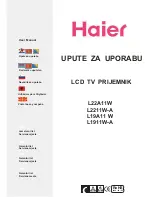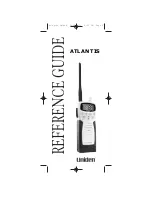
HX500S
Page 8
4. GETTING STARTED
Lithium ion (Li-ion) batteries pack high energy density in a tiny package.
Other than higher power and lower weight, li-ion batteries are user friendly
as well. Unlike its predecessor, the nickel-cadmium, lithium-ion batteries do
not suffer from the “memory effect.” That is, the battery does not have to be
fully discharged before being recharged.
Though the batteries do not suffer from the memory effect, it is just the oppo-
site that users should be wary of. Lithium ion batteries shouldn’t be run all
the way down before charging; they respond much better with constant re-
charges.
To prolong the battery when not in use, store it in a cool dry place at approxi-
mately 40 percent capacity. Also, avoid exposing a lithium ion battery to ex-
treme temperatures for prolonged periods of time, and recharge constantly
when in use..
4.1 BATTERIES AND CHARGERS
The
FNB-98LI
is a high performance Lithium-Ion battery providing high ca-
pacity in a compact package.
CAUTION
To avoid risk of explosion and injury,
FNB-V98LI
battery pack should
only be removed, charged or recharged in non-hazardous environments.
4.1.1 BATTERY SAFETY
Battery packs for your transceiver contain Lithium-Ion batteries. This type of
battery stores a charge powerful enough to be dangerous if misused or
abused, especially when removed from the transceiver. Please observe the
following precautions:
DO NOT SHORT BATTERY PACK TERMINALS
: Shorting the terminals that
power the transceiver can cause sparks, severe overheating, burns, and
battery cell damage. If the short is of sufficient duration, it is possible to melt
battery components. Do not place a loose battery pack on or near metal
surfaces or objects such as paper clips, keys, tools, etc. When the battery
pack is installed on the transceiver, the terminals that transfer current to the
transceiver are not exposed. The terminals that are exposed on the battery
pack when it is mounted on the transceiver are charging terminals only and
do not constitute a hazard.











































